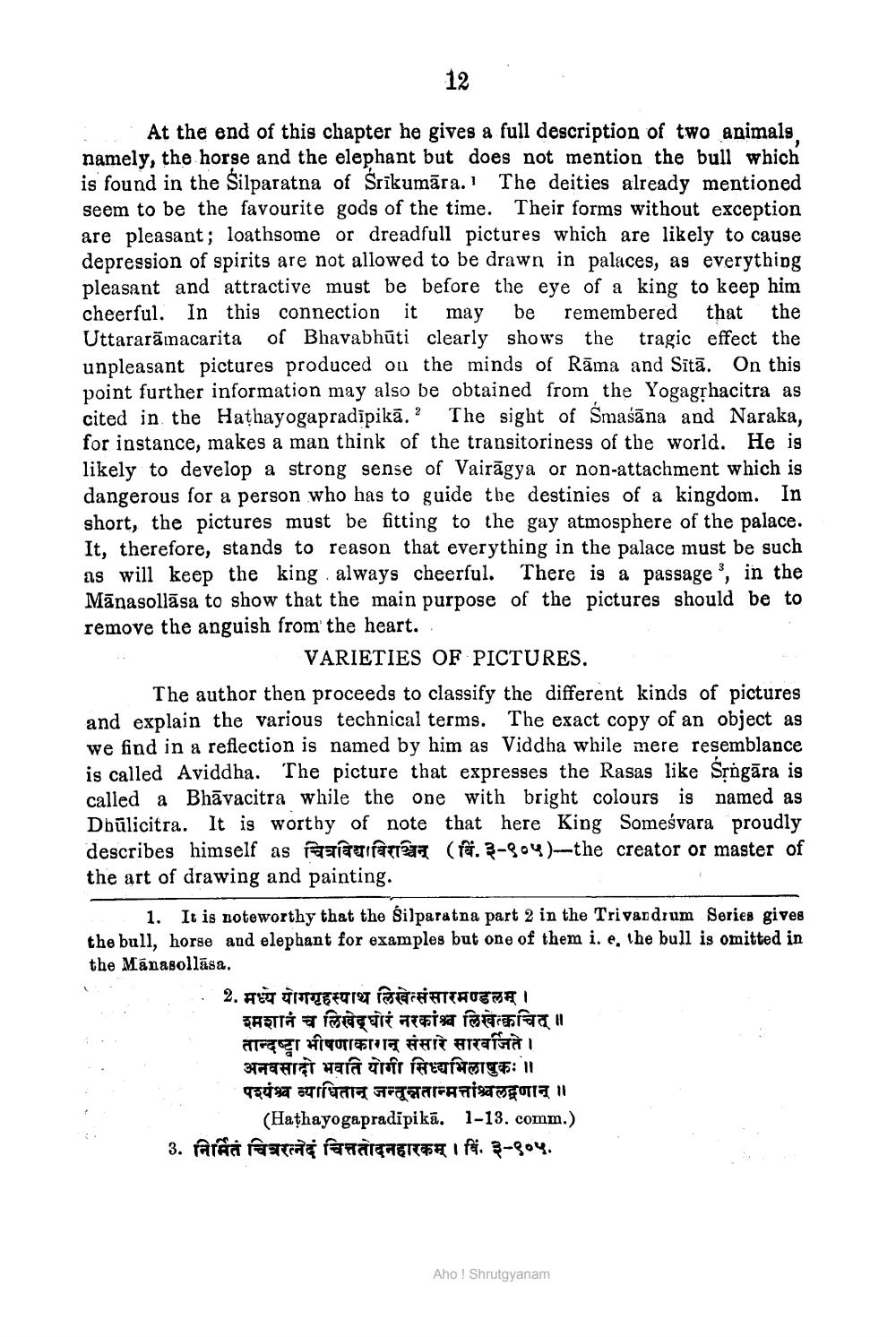________________
12
.
At the end of this chapter he gives a full description of two animals namely, the horse and the elephant but does not mention the bull which is found in the Silparatna of Srikumāra.1 The deities already mentioned seem to be the favourite gods of the time. Their forms without exception are pleasant; loathsome or dreadfull pictures which are likely to cause depression of spirits are not allowed to be drawn in palaces, as everything pleasant and attractive must be before the eye of a king to keep him cheerful. In this connection it may be remembered that the Uttararāmacarita of Bhavabhūti clearly shows the tragic effect the unpleasant pictures produced on the minds of Rāma and Sītā. On this point further information may also be obtained from the Yogagrhacitra as cited in the Hathayogapradipikā.? The sight of Smaśāna and Naraka, for instance, makes a man think of the transitoriness of the world. He is likely to develop a strong sense of Vairāgya or non-attachment which is dangerous for a person who has to guide the destinies of a kingdom. In short, the pictures must be fitting to the gay atmosphere of the palace. It, therefore, stands to reason that everything in the palace must be such as will keep the king always cheerful. There is a passage }, in the Mānasollāsa to show that the main purpose of the pictures should be to remove the anguish from the heart.
VARIETIES OF PICTURES. The author then proceeds to classify the different kinds of pictures and explain the various technical terms. The exact copy of an object as we find in a reflection is named by him as Viddha while mere resemblance is called Aviddha. The picture that expresses the Rasas like Srngāra is called a Bhāvacitra while the one with bright colours is named as Dbūlicitra. It is worthy of note that here King Someśvara proudly describes himself as ATTarrara (f. -804)--the creator or master of the art of drawing and painting.
1. It is noteworthy that the silparatna part 2 in the Trivandrum Series gives the bull, horse and elephant for examples but one of them i. e, the bull is omitted in the Mānasollāsa.
2. AT TITTEFUTOT TEHTAUTTA
श्मशानं च लिखेद्घोरं नरकांश्च लिखेक्वचित् ॥ तान्दष्ट्रा भीषणाकागन संसारे सारजिते। अनवसादो भवति योगी सिध्द्यभिलाषुकः॥
19 STATT Fragarrari gola 11
(Hathayogapradspikā. 1-13. comm.) 3. fara retra rapattag* f. 3-804.
Aho ! Shrutgyanam




